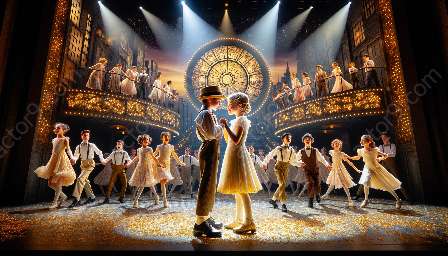Being a professional dancer in Broadway productions comes with a myriad of psychological and emotional aspects that are unique to the world of musical theater. From the rigorous demands of Broadway choreography to the exhilarating experience of performing on stage, the emotional journey of a dancer in this industry is both challenging and rewarding.
1. Psychological Challenges
Professional dancers in Broadway productions often face significant psychological challenges as they navigate the competitive and high-pressure environment of the industry. The constant need to audition and compete for roles can lead to feelings of self-doubt and insecurity. Additionally, the intense focus on physical appearance and performance standards can contribute to body image issues and perfectionism.
1.1. Self-Confidence and Rejection
One of the most prevalent psychological challenges for professional dancers is maintaining self-confidence in the face of rejection. The audition process in the world of Broadway productions can be grueling, with countless talented dancers vying for limited roles. As a result, dancers must develop resilience and a strong sense of self-worth to cope with the inevitable rejections they will encounter.
1.2. Perfectionism and Pressure
Broadway choreography demands a high degree of technical skill and precision, leading many dancers to experience pressure to achieve perfection in every performance. This pressure can be emotionally taxing and may contribute to anxiety and stress. Dancers must learn to manage these expectations while maintaining their mental well-being.
2. Emotional Rewards
Despite the challenges, there are numerous emotional rewards that come with being a professional dancer in Broadway productions. The thrill of performing on stage, the camaraderie among cast members, and the opportunity to bring art to life through movement all contribute to a deeply fulfilling emotional experience.
2.1. Artistic Expression and Fulfillment
Professional dancers find immense emotional fulfillment in the opportunity to express themselves artistically through dance. The ability to convey emotions and tell stories through movement allows dancers to connect with audiences on a profound level, creating a sense of purpose and gratification.
2.2. Collaboration and Community
In the world of Broadway and musical theater, dancers form close-knit communities and forge deep connections with their fellow performers. The shared passion for the art form creates a supportive and nurturing environment where dancers can find belonging and understanding.
3. Coping Strategies and Self-Care
To navigate the psychological and emotional aspects of being a professional dancer in Broadway productions, it is essential for dancers to prioritize self-care and develop effective coping strategies. This may include seeking support from peers and professionals, engaging in mindfulness practices, and maintaining a healthy work-life balance.
3.1. Mental Health Awareness
Advocating for mental health awareness and destigmatizing conversations about psychological well-being is crucial in the dance community. Open dialogue and access to mental health resources can empower dancers to seek the support they need and prioritize their mental wellness.
3.2. Self-Compassion and Resilience
Cultivating self-compassion and resilience is vital for professional dancers facing the psychological and emotional demands of the industry. By practicing self-care, setting realistic expectations, and developing a strong support system, dancers can build inner strength and emotional fortitude.
In conclusion, being a professional dancer in Broadway productions encompasses a complex interplay of psychological and emotional factors. While the industry presents unique challenges, it also offers profound emotional rewards and opportunities for personal growth. By acknowledging and addressing the psychological and emotional aspects of their craft, dancers can cultivate resilience, find fulfillment, and thrive in the world of Broadway choreography and musical theater.



































